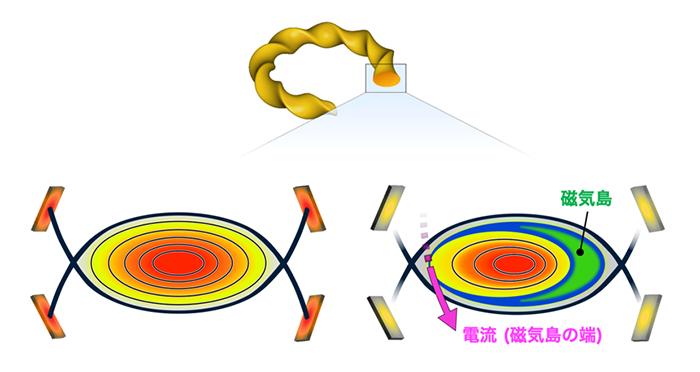2021-12-14 シンガポール・南洋(ナンヤン)理工大学(NTU)

・ NTU が、セルロース紙にスクリーンプリントで作製する、生分解性亜鉛電池を開発。
・ 新ペーパー電池は、ハイドロゲルで強化したセルロース紙(HCP)の両面にスクリーンプリントした 2本の電極から構成され、使用後に土壌に埋めれば 1 ヶ月以内に完全に分解する。
・ 市販の折りたたみ式スマートフォンや健康モニタリング用生体センサー等のフレキシブルでウェアラブルなエレクトロニクスに統合可能な、環境的に持続可能な電源として期待できる。
・ セルロースの繊維ギャップをハイドロゲルで充填した HCP で電極同士の接触を効果的に回避する高密度のセパレータを形成し、HCP の両面に電極を作る「電極インク」をスクリーンプリントしたプロトタイプを作製した。
・ アノードのインクは主に亜鉛とカーボンブラックから構成され、カソードのインクはマンガンとニッケルの 2 種類を作製(他金属も使用可能)。各電極プリント後に電池を電解質に浸し、電極に金薄箔の集電装置をコーティングした最終的なペーパー電池は約 0.4mm の薄さになる。
・ 4cm×4cm サイズの新ペーパー電池の概念実証では、電池の折り曲げやひねりで中断することなく小型扇風機に少なくとも 45 分間エネルギーを供給。また、LED へのエネルギー供給では電池の一部を切り取っても機能を保持した。
・ 効率性を損失することなく自由な形状やサイズに切り取り可能な一枚の大面積電池により、シンプルで安価な電池の製造方法を提案する。
・ 本研究は、人類の緊急重要課題に対処するための持続可能な解決策の展開を目指した、NTU2025 vision と Sustainability Manifesto に準じたもの。
・ 電池のコンポーネントを格納するアルミニウムやプラスチックのケーシングが不要なため、電子廃棄物の課題の解決にも貢献。パッケージング層の省略によりエネルギーをより多く貯蔵できるため、小型電池でのエネルギー出力が向上する。
・ NTU キャンパスの屋上庭園の土壌にペーパー電池を埋めて生分解性を実証。HCP は 2 週間後に壊れ始め、1 ヶ月で完全に分解した。カソードのニッケルとマンガンは天然のミネラルに近い酸化物や水酸化物の状態を維持し、アノードの亜鉛は自然な酸化で無毒性の水酸化物となる。
・ 今後はプリンテッドエレクトロニクス、電子スキンや環境用エネルギー貯蔵システムへの完全統合の実証を目指す。
URL: https://www.ntu.edu.sg/news/detail/batteries-of-the-future-could-be-paper-thin-and-biodegradable
<NEDO海外技術情報より>
(関連情報)
Advanced Science 掲載論文(フルテキスト)
Printed Zinc Paper Batteries
URL: https://onlinelibrary.wiley.com/doi/10.1002/advs.202103894
Abstract
Paper electronics offer an environmentally sustainable option for flexible and wearable systems and perfectly fit the available printing technologies for high manufacturing efficiency. As the heart of energy-consuming devices, paper-based batteries are required to be compatible with printing processes with high fidelity. Herein, hydrogel reinforced cellulose paper (HCP) is designed to serve as the separator and solid electrolyte for paper batteries. The HCP can sustain higher strain than pristine papers and are biodegradable in natural environment within four weeks. Zinc-metal (Ni and Mn) batteries printed on the HCP present remarkable volumetric energy density of ≈26 mWh cm–3, and also demonstrate the feature of cuttability and compatibility with flexible circuits and devices. As a result, self-powered electronic system could be constructed by integrating printed paper batteries with solar cells and light-emitting diodes. The result highlights the feasibility of hydrogel reinforced paper for ubiquitous flexible and eco-friendly electronics.



